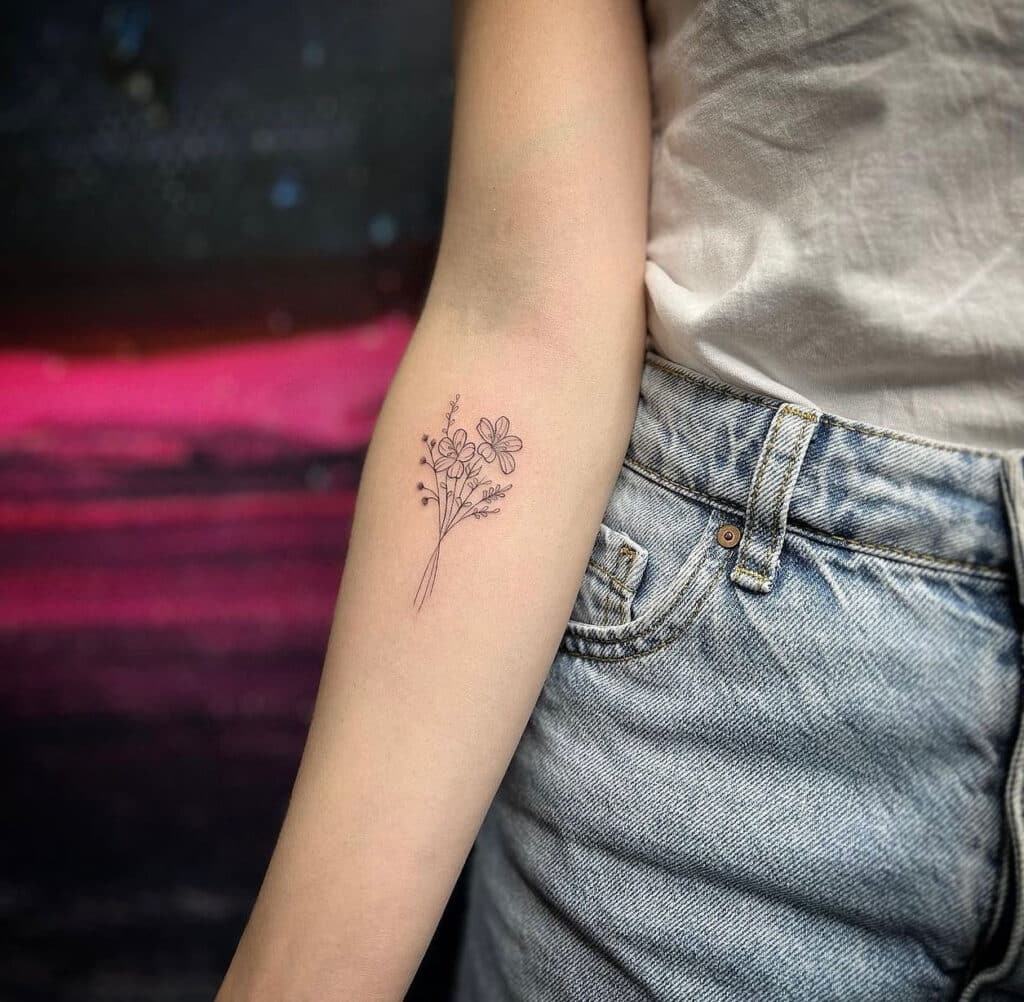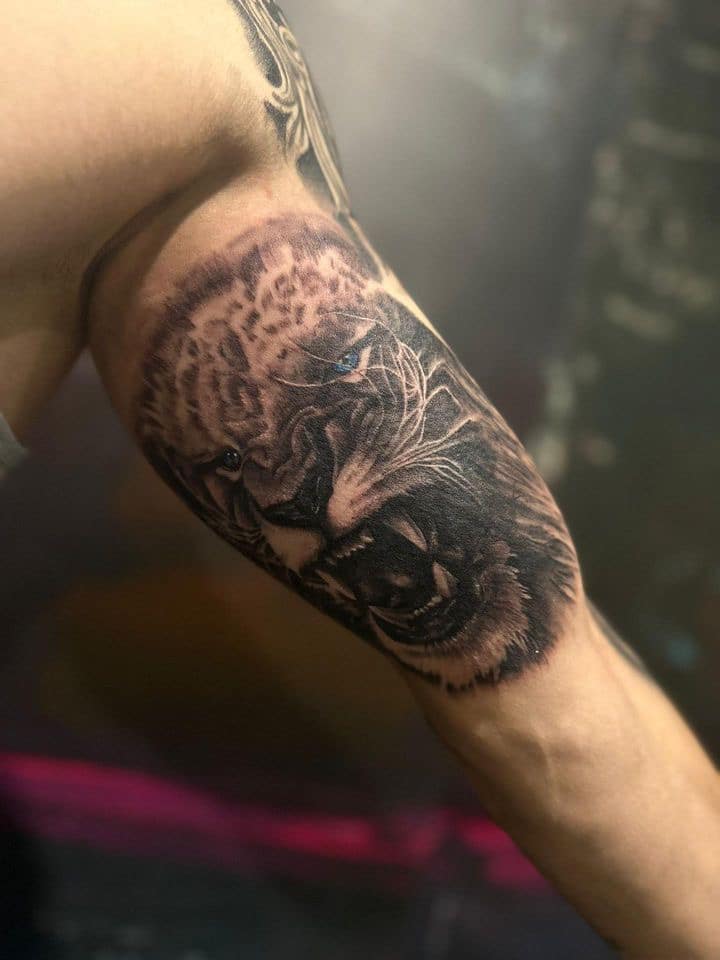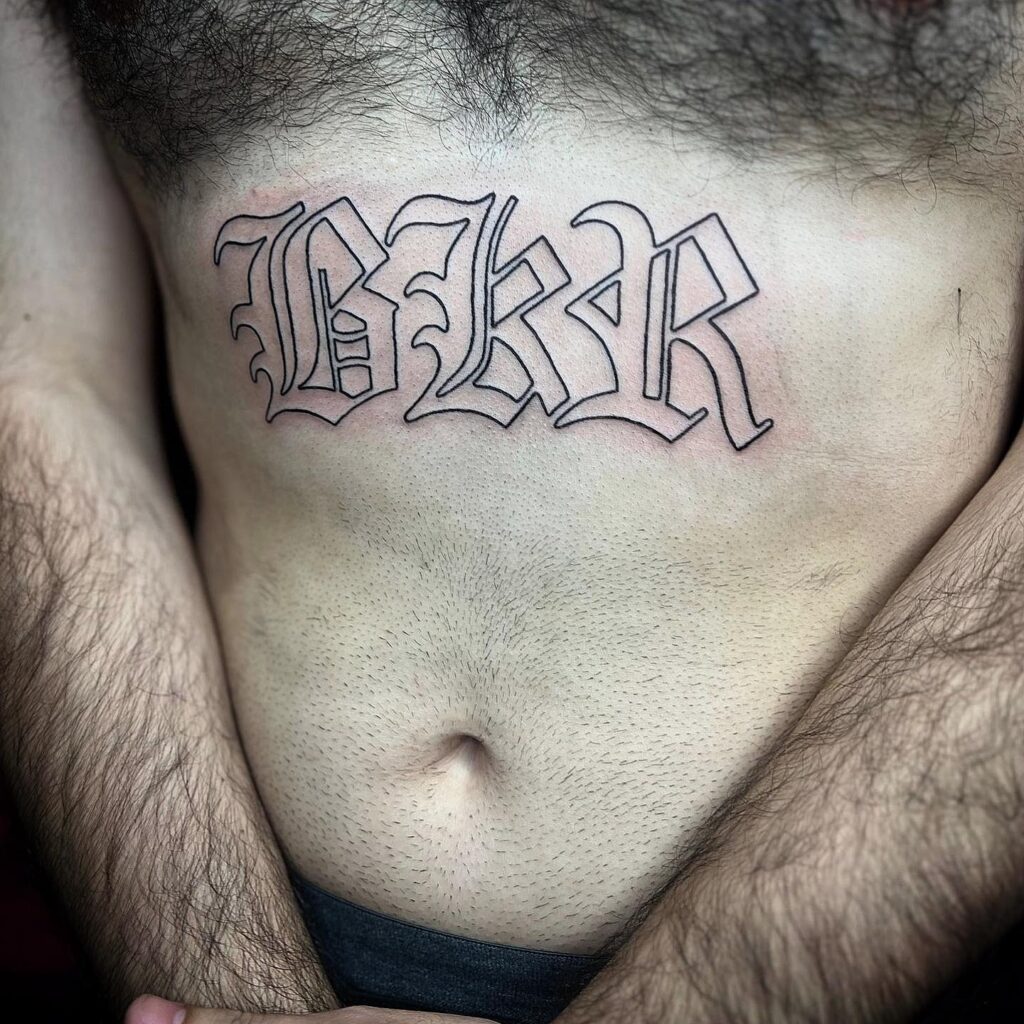Tattoos have become increasingly popular in recent years, a recent study has shown that Australians are now getting inked more than ever! with 1 in 4 Australians having at least one tattoo, this is up 20% from 2018. But one question thats still on peoples mind: does getting a tattoo hurt? The answer may vary depending on factors such as pain tolerance, tattoo placement, and the size of the design. In this blog, we will explore the different aspects of tattoo pain and provide some insights for those considering getting their first tattoo.
What to Expect During a Tattoo Session
Getting a tattoo is an exciting experience for many, but it’s natural to wonder if it will hurt. Understanding the step-by-step process and different sensations can help alleviate any concerns.
During a tattoo session, the artist will start by preparing the area to be tattooed, cleaning it and shaving any hair if necessary. Next, they will transfer the design onto your skin using a stencil or by freehand drawing. Once you approve the placement and design, the artist will begin tattooing, using a tattoo gun and needle to inject ink into the dermis layer of the skin.
The sensation will vary depending on your pain threshold, the tattoo’s location, and the size of the design. Some describe the feeling as a stinging pain or a dull ache, while others find it more intense. However, many people find ways to distract themselves from the pain, such as listening to music, engaging in conversation, or focusing on their breathing.
To ensure a smooth tattoo session, it’s important to avoid alcohol, aspirin, and other blood-thinning medications that can increase bleeding. Additionally, discussing any allergies with your tattoo artist beforehand is crucial to avoid the risk of an allergic reaction to the ink or other tattoo products.

Pain Tolerance
One factor that plays a significant role in the overall experience, is an individual’s pain tolerance. Pain tolerance varies from person to person, and what may be uncomfortable for one individual might be less so for another. Some people have a high tolerance for pain and can handle the tattooing process with ease, while others may find it more challenging.
Painful Tattoo Areas
While pain tolerance varies from person to person, certain spots on the body are generally known to be more painful when it comes to getting a tattoo. Tattoo artists and enthusiasts have ranked the following spots as some of the most painful:
- Ankle: The skin around the ankle is thin and close to the bone, making it a particularly sensitive area for tattooing.
- Ribcage: The ribcage area has less flesh and is closer to the bone, resulting in a more uncomfortable tattoo experience.
- Inner thighs: The inner thighs have thinner skin and are also close to more sensitive areas, making them more prone to pain.
- Armpits: With a high concentration of nerves and thinner skin, the armpits can be quite sensitive during a tattoo session.
- Sternum: The sternum, or the centre of the chest, is typically a more painful spot due to its proximity to the bone and thinner skin.
- Wrists: The skin on the wrists is delicate and sensitive, which can lead to heightened pain during the tattooing process.
- Fingertips: Finger tattoos can be particularly painful due to the thinness of the skin and abundance of nerve endings in this area.
Other factors that contribute to the pain experienced during a tattoo session are bony parts of the body, areas with thin skin, and regions with a high concentration of nerve endings.

Numbing Creams
Numbing creams can be a game-changer for those looking to minimise the pain associated with getting a tattoo. These creams contain ingredients such as lidocaine, which work by absorbing into the skin and blocking pain signals from reaching the brain.
Before a tattoo session, applying a numbing cream can help reduce the discomfort significantly. The process typically involves cleaning the skin and then applying a thick layer of the cream to the desired area. It’s important to follow the instructions provided with the specific numbing cream being used, as wait times can vary. Generally, it is recommended to wait around 30 minutes for the cream to fully take effect.
It’s important to note that while numbing creams can greatly reduce pain, they may not completely eliminate it for everyone. Additionally, some individuals may have allergic reactions to certain ingredients in these creams, so it’s always advisable to do a patch test prior to applying them to the tattoo area.
When considering a tattoo session, numbing creams provide an option for those with a lower pain tolerance or sensitive areas. Always consult your tattoo artist before using any numbing creams to ensure the approach is appropriate for your specific situation.

Allergic Reactions
During the tattooing process, certain individuals may experience allergic reactions. These reactions can be caused by various factors, including the tattoo ink, numbing creams, or other products used during the process. It is important to be aware of the symptoms of allergic reactions to ensure prompt medical attention if necessary.
Common symptoms of an allergic reaction during the tattooing process can include redness, itching, swelling, and rashes in and around the tattooed area. These symptoms may appear immediately after the tattoo session or develop over time.
Tattoo ink can contain allergenic substances that can trigger allergic reactions in some individuals. The most common allergens found in tattoo ink include nickel, cobalt, and red dyes. These allergens can cause inflammation and irritation in the skin, leading to the symptoms mentioned earlier.
Numbing creams, which are used to reduce pain during the tattooing process, can also cause allergic reactions in some people. It is important to do a patch test prior to applying any numbing cream to the tattoo area to check for any possible allergic reactions.
Types of Tattoos
Tattoos come in various shapes, sizes, and styles, allowing individuals to express their personality, commemorate important events, or simply adorn their bodies with unique artwork. From traditional designs to modern and abstract creations, the world of tattoos offers a wide range of options for every taste and preference.
Some popular types of tattoos include traditional tattoos, which draw inspiration from classic American and Japanese tattoo styles, realistic tattoos that aim to recreate lifelike images, water colour tattoos that resemble delicate brushstrokes, and minimalist tattoos characterised by their simplicity and fine lines. Other popular styles include blackwork tattoos, dot work tattoos, geometric tattoos, and tribal tattoos.
The choice of tattoo style ultimately depends on the individual’s personal taste and the aesthetics they wish to embody. Whether bold and vibrant or subtle and delicate, tattoos allow people to showcase their unique identities through the artistry etched into their skin.

Larger Tattoos
Larger tattoos can often result in a higher pain level due to several factors. Firstly, the size of the tattoo itself can contribute to increased discomfort. The increased surface area being tattooed means that there is more skin being pierced by the tattoo needle, resulting in a more intense sensation.
In addition to size, the complexity of the tattoo design can also play a role in the overall pain experienced during the tattoo session. Intricate and heavily filled designs require more detailed work, which can cause more discomfort compared to simpler designs that can be completed more quickly.
The location of the tattoo is another important factor to consider. Certain areas of the body tend to be more sensitive and have fewer layers of padding. For example, the rib cage, hip bones, spine, and armpits are known to be more painful tattoo spots. These areas have thinner skin, with a higher concentration of nerve endings, making them more susceptible to pain.
However, it is worth noting that pain experienced during a tattoo session can also be mitigated by certain factors. For larger tattoos, selecting a location with thicker skin and more padding, such as the calf or thigh, can help minimise the pain.

Rib Cage Tattoos
When it comes to getting a tattoo, the rib cage is often considered one of the most painful areas on the tattoo pain scale. The thin skin and lack of cushioning in this region contribute to the intensity of the pain experienced during the tattoo session.
The rib cage is located directly over the rib bones, which adds to the discomfort. Unlike other areas of the body, the rib cage has minimal muscle or fat to act as a cushion. As a result, the tattoo needle is essentially working directly on the skin and bone, creating a more intense sensation.
Additionally, the rib cage area is known for its thin skin. This means that the tattoo needle is closer to the nerve endings, resulting in heightened sensitivity during the tattoo process. The proximity of the rib bones also plays a role in amplifying the pain.

Get Inked with InkZu
InkZu is a top tattoo studio in Sydney that offers expert tattoo services to individuals looking to get inked. Whether you are interested in a small, intricate design or a large, elaborate piece, InkZu has skilled artists who can bring your vision to life.With a wide range of styles and techniques, we can create a tattoo that is unique and personalised to you. Our studio prioritises cleanliness and hygiene, ensuring a safe and comfortable experience for all our clients.
Trust InkZu to provide you with a remarkable tattoo that you can proudly wear for a lifetime. Get in contact today and book your appointment!
